ClearRead CT is comprised of computer assisted reading tools designed to aid the radiologist in the detection of pulmonary nodules during review of chest CT of asymptomatic population. The software enables the detection, quantification and characterization of solid, part solid and ground glass pulmonary nodules. ClearRead CT also allows suppression of vascular, bronchial and fissural structures.

Images shown for illustrative purposes only.
Clinical Workflow

For CalanticTM software version 1.0.0, no prior study will be examined.

Appropriate Series
Contrast or non-contrast chest CT scans
Axial oriented scans with no more than +/-1 degree of rotation
Maximum slice thickness of 5mm for Vessel Suppress and 3mm for Detect with jitter of no more than 0.1mm
Maximum slice spacing of 5mm for Vessel Suppress and 3mm for Detect with jitter of no more than 0.1mm
Maximum contiguous volume of 80mm
Maximum contiguous volume of 1067mm
Consistent table height and patient position throughout the series.
ClearRead CT prefer scans with the following characteristics:
- Soft reconstruction kernels over sharp ones
- Inspiration over expiration
- Non-contrast over contrast
- Thin-slice over thick-slice
- Minimum image artifacts
- Minimum obstructions (Chest tubes, excessive fluid, or other gross abnormalities)
ClearRead CT can generate a wide array of Output Objects (also known as Derived Objects). These are made available to clinicians to be used per device indications. Output objects may contain measurement information, including:
- Location: The lobe location of a nodule,one of right-upper-lung (RUL), right-middle-lung (RML), right-lower-lung (RLL), left-upper-lung (LUL) or left-lower-lung (LLL).
- Type: The classification of a nodule, one of solid, part-solid or ground-glass.
- Maximum Diameter: The largest diameter of a nodule, in millimeters(mm), measured in any axial plane.
- Minimum Diameter: The diameter of a finding perpendicular to the one yielding the maximum diameter, in mm.
- Average Diameter: The average of the minimum and maximum diameters, in mm.
- Z-Diameter: The craniocaudal (head-to-foot) diameter of a nodule, in mm.
- Volume: The estimated volume of a nodule, in cubic millimeters (mm3).
- Lung Volume:. The estimated volume of a lung, in liters.
- Number of Findings: The number of detected nodules, up to 5 by default. An asterisk (*) indicates additional nodules exist.
- Doubling Time (Compare only): The estimated time, in days, it would take for a nodule to double in volume, based on past growth.
- Volume Change (Compare only): The change in volume, in percent, from a prior scan to the current one. For part-solid nodules, the volume change for the solid part is reported separately.
Vendor
Riverain Technologies, Inc.
EU risk class and CE marking
ClearRead CT has CE marking (CE2862) and risk class IIa.
Reimbursement status
Not reimbursed.
Contraindications
Not applicable.
Patient Target Group
Patients 18 years and older.
Limitations
Valid Input: ClearRead CT has been designed to accept contrast or non-contrast axial chest CT scans as input, in DICOM format, that meets certain specifications. Invalid input may lead to no output being generated by ClearRead CT or to degraded device performance.
Quality Input: ClearRead CT has been optimized to process scans configured to assist the detection and characterization of nodules. Results may not be optimal for scans that do not meet these considerations.
Field of View: Input scan is expected to contain both lungs, and the field of view, whether square or circular, should not clip the lungs. The entire intrathoracic cavity should be included even if the patient has had prior lung surgery (e.g., lobectomy).ClearRead may fail to process scans with cropped lungs, the compare feature might not perform optimally, and the estimated volumetric changes of nodules may not be reliable.
False Positives and False Negatives: ClearRead CT is designed to maximize true-positive detections while minimizing the number of false positives. The following are the predominant sources of false positives:
I. Imaging artifacts, such as beam-hardening artifacts due to metallic structures or the contrast agent; image noise due to low-dose acquisition; and partial volume errors.
II. Benign pathologies, such as scars, mucous plugs, and pleural plaques.
III. Other Pathologies, such as tuberculosis, pneumonia, and presence of other lung diseases including emphysema or pulmonary embolism.
IV. Normal anatomy, such as residual vessels, bronchial structures, and protrusions on the pleural surface.
Patient Age: ClearRead CT has been validated for adult patients and should only be used on patients 18 years old or older.


Discover ClearRead CT
Now available as part of Calantic's Thoracic service Line. Contact us today to learn more.









